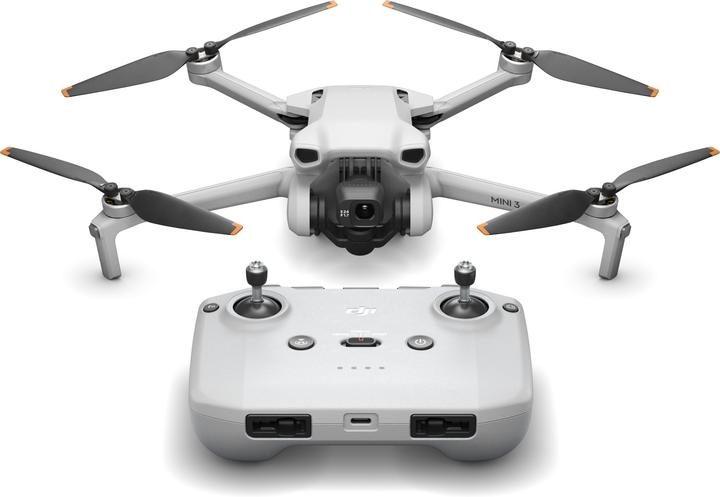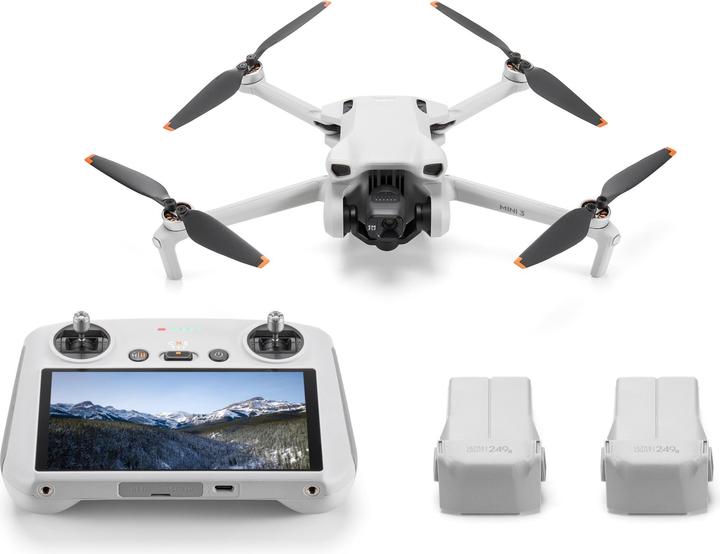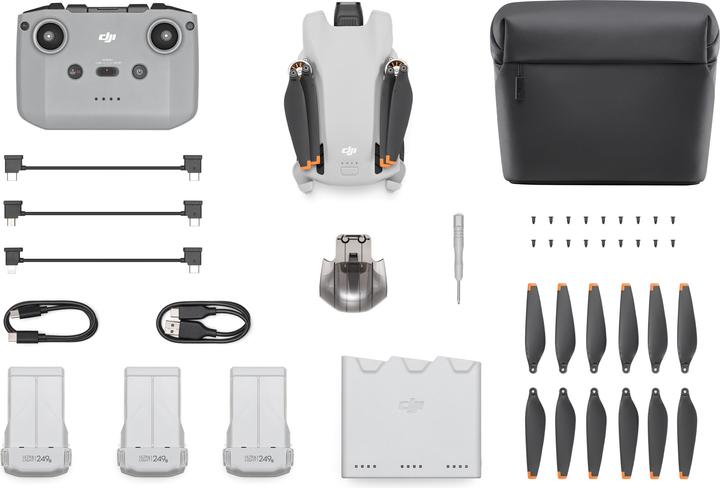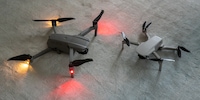

Overview: DJI drones below 250 grams
In the last year, DJI released four drones that weigh less than 250 grams – all with different features and equipment. Let’s find out more about this quartet.
It’s only been three years since Chinese manufacturer DJI presented its first drone under 250 grams. In the past 12 months, no fewer than four new models in this weight category have been released. Here are the Mini models in chronological order, starting with the one that was launched first:
- DJI Mini 1, released at the end of 2019 originally called DJI Mavic Mini
- DJI Mini 2, end of 2020
- DJI Mini 3 Pro, mid-2022
- DJI Mini SE, early 2022
- DJI Mini 3, end of 2022
- DJI Mini SE 2, early 2023
This means you can choose between several very similar drone models – depending on your budget and needs. But what are the differences?
The models can be divided into three series:
- the SE series: SE 1 and SE 2
- the regular Mini series: Mini 1, Mini 2, Mini 3
- the Pro series: so far only the Mini 3 Pro
The SE models are slimmed-down, low-priced models. They’re equipped with familiar technology from the other Mini models, which is why they’re quite similar.
The Mini 1 is no longer available – the SE 1 is being phased out and is discontinued. The following four drones remain in the weight category under 250 grams:
The Mini 3 Pro is different
As of today, the Mini 3 Pro stands out from all the other models. Why? It features obstacle detection sensors at the bottom, front and rear. All the others only have a sensor on the bottom, which is required for automated landing. So far, the 3 Pro is also the only Mini that can capture 4K at 60 frames per second (FPS) and track objects. It boasts 48 instead of 12 megapixels, but can also record with 12 megapixels, combining four pixels. In this HDR mode, the camera is larger, more sensitive to light and thus copes better with large differences in brightness.
HDR can also be applied to recordings. The Mini 3 Pro offers the colour profile D-Cinelike with 10 bit colour depth and the superior H.265 compression for video post-processing.
The Mini 3 without «Pro» in its name is also equipped with some of the Mini 3 Pro’s features – but the other models aren’t. The features include the option of a controller with its own screen, which works without a smartphone. Furthermore, the gimbal can be rotated by 90 degrees to take portrait shots in full resolution. On top of this, the Mini 3 and Mini 3 Pro feature a different design with longer propellers and arms that can be folded in and out in any order.
Comparing the four current models
The Mini SE 2 and the Mini 2 are very similar. The only notable difference is the maximum video quality – 4K for the Mini 2 and a maximum of 2.7K for the Mini SE 2. In addition, the Mini SE 2 can only master this resolution at a maximum of 30 FPS, while the Mini 2 offers 60 FPS.
The gulf between the Mini 2 and the Mini 3 is larger. The Mini 3 features a larger sensor and a faster lens, which results in better image quality, especially in low light. In addition, the Mini 3 can fly slightly longer on one battery charge and can be used with the standalone RC controller.
| Model | Mini SE 2 | Mini 2 | Mini 3 | Mini 3 Pro |
|---|---|---|---|---|
| Max. photo resolution | 12 MPx | 12 MPx | 12 MPx | 48 MPx |
| Max. video quality | 2,7K30 | 4K30 | 4K30 | 4K60 |
| Photo sensor size | 1/2,3 inch | 1/2,3 inch | 1/1.3 inch | 1/1.3 inch |
| Light intensity lens | f/2,8 | f/2,8 | f/1,7 | f/1,7 |
| Sensors | bottom | bottom | bottom | bottom, front, back |
| Flight time* | 31 min | 31 min | 38 min | 34 min |
| Tracking | no | no | no | yes |
| Transmission technology | OcuSync 2.0 | OcuSync 2.0 | OcuSync 2.0 | OcuSync 3.0 |
| Controller with screen | no | no | optional | optional |
All four current models offer good transmission technology compared to the outdated Mini 1 and SE 1 models. The latter experienced dropouts in the live image and, in the worst case, the drones could even become uncontrollable. This doesn’t happen with OcuSync 2.0. The Mini 3 Pro boasts OcuSync 3.0, which is even better – it allows higher data rates and has lower latency.
Equipment variants
All models are available in various equipment variants. And that’s where it gets pretty complicated I’m afraid.
With the Mini 2 and Mini SE 2, the standard version includes everything you need to start flying: drone, controller, connection cable, battery and spare propeller. The Fly More Combo contains two additional batteries and a charger that powers all three batteries in sequence. A transport bag and more spare propellers are also included.
For the Mini 3, you can choose between five equipment variants. Standard packages are available with a regular controller, a luxury controller or without one. There’s also a Fly More Combo for each of the two controller types. Here are all the variants of the Mini 3:
There are also five variants for the Mini 3 Pro, but not the same ones as for the Mini 3. Confusing? I agree. The Fly More Kit with a regular controller doesn’t exist for the Mini 3 Pro. Instead, there’s a Fly More Combo without the drone. This is an accessories-only package – which explains the low price. It allows you to create your own Fly More Combo with a standard controller.
Why DJI did it this way
¯\_(ツ)_/¯
What to buy?
The performance levels are pretty much mirrored in the price. In other words,the price-performance ratio is about the same for all four Minis. Which one’s right for you? This depends entirely on what you need and how much you’re willing to spend. Here’s an example: if you’re looking for 4K video, you need to get at least a Mini 2. If you want a screen controller, you’re looking at the Mini 3 or better. Refer to the table above or compare the specs to find out more.
My recommendation? I’d definitely buy a Fly More bundle. The flight time of half an hour can be considerably reduced in cold weather or strong winds, in which case you’ll definitely need more than one battery. If in doubt, choose a cheaper drone with spare batteries rather than a slightly more expensive one with only one battery.
My interest in IT and writing landed me in tech journalism early on (2000). I want to know how we can use technology without being used. Outside of the office, I’m a keen musician who makes up for lacking talent with excessive enthusiasm.
Practical solutions for everyday problems with technology, household hacks and much more.
Show all










